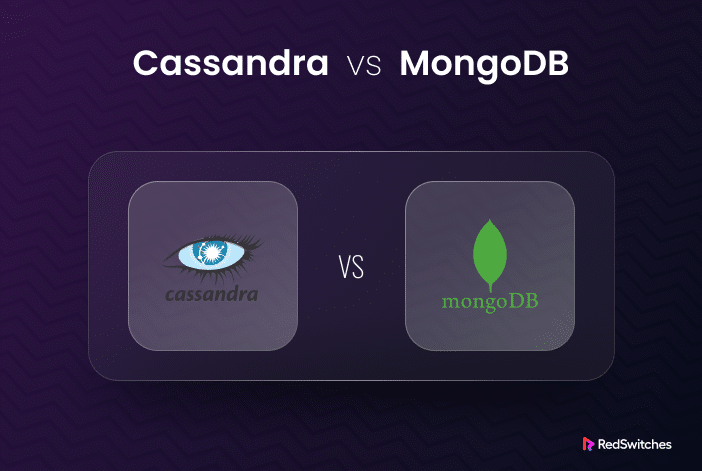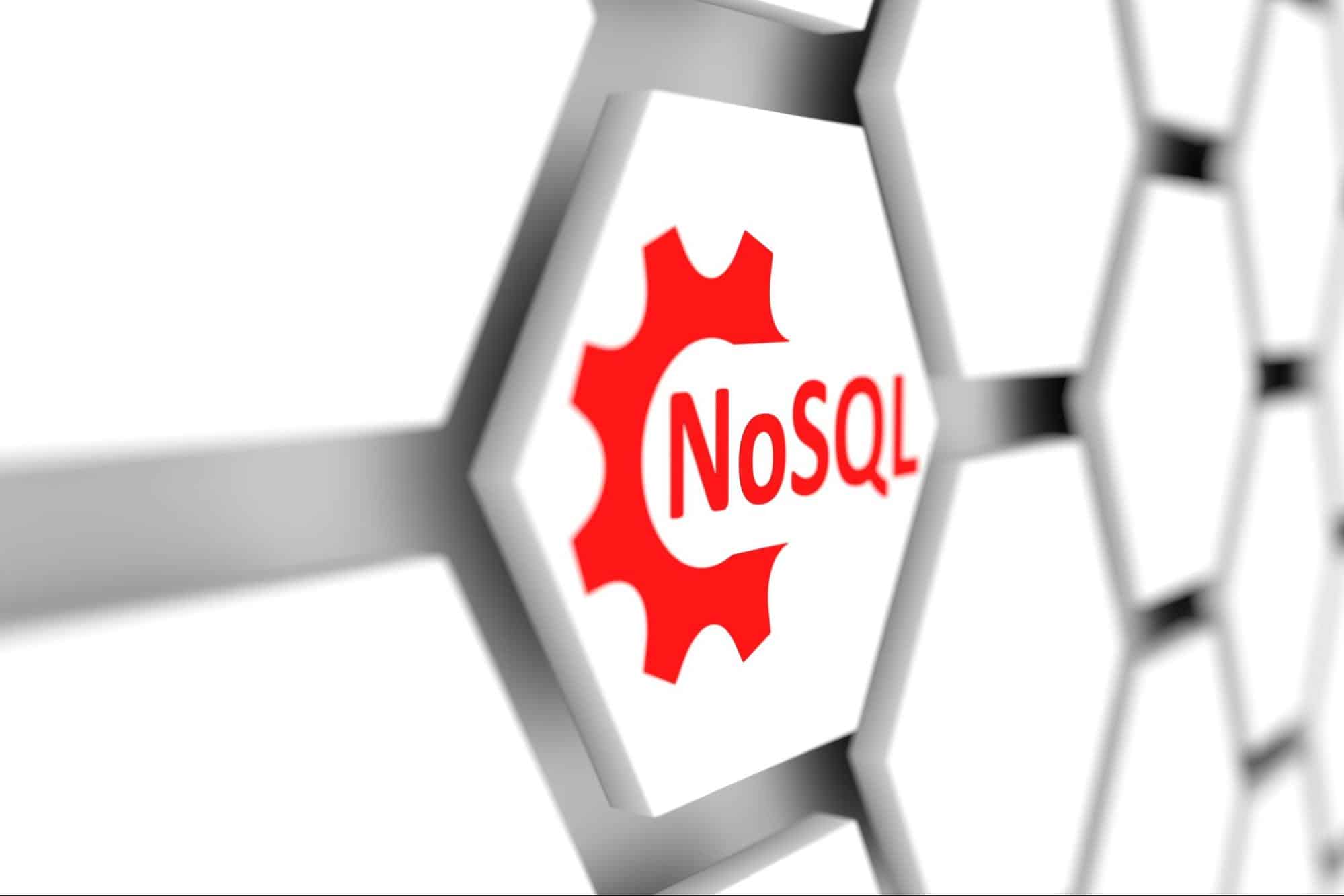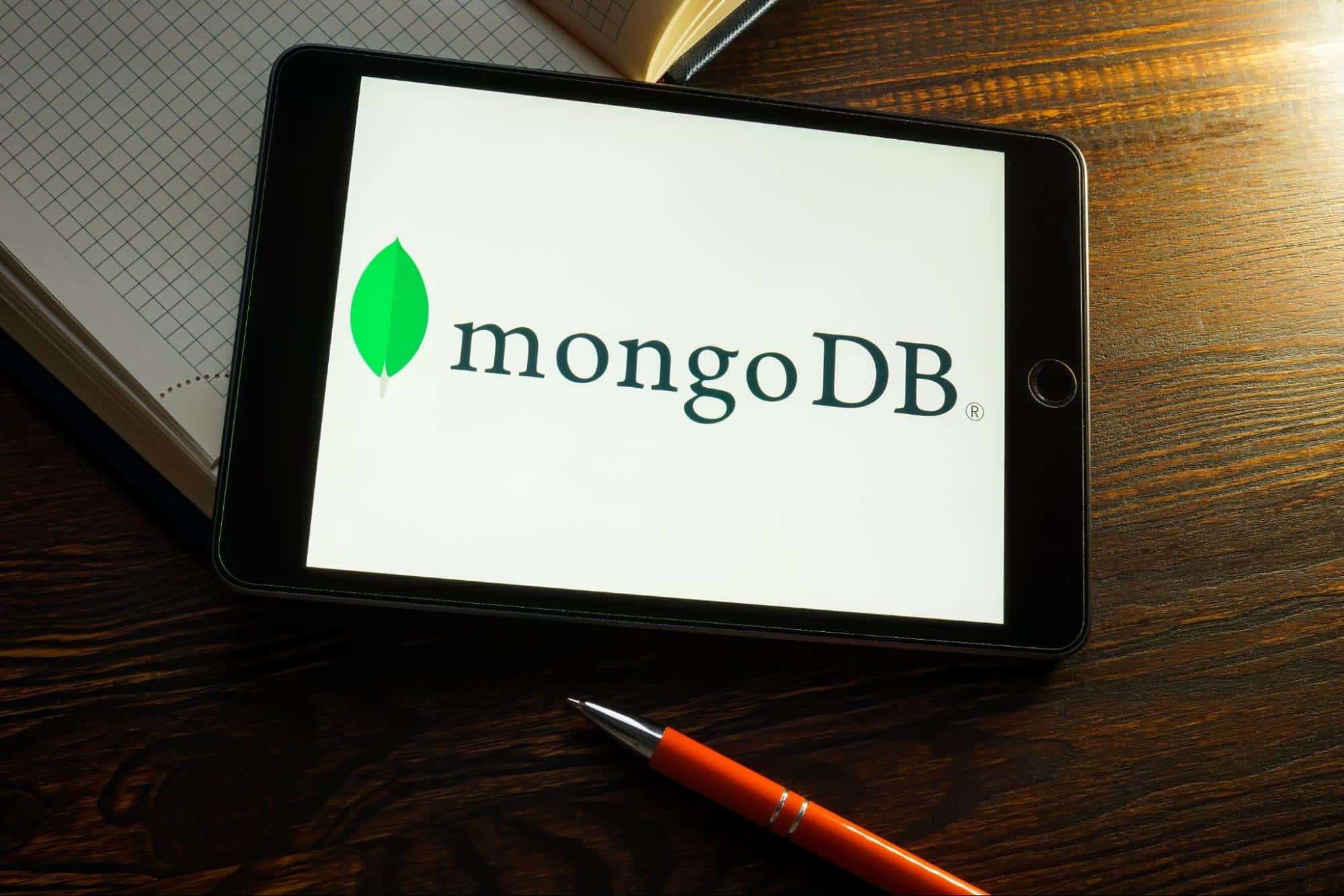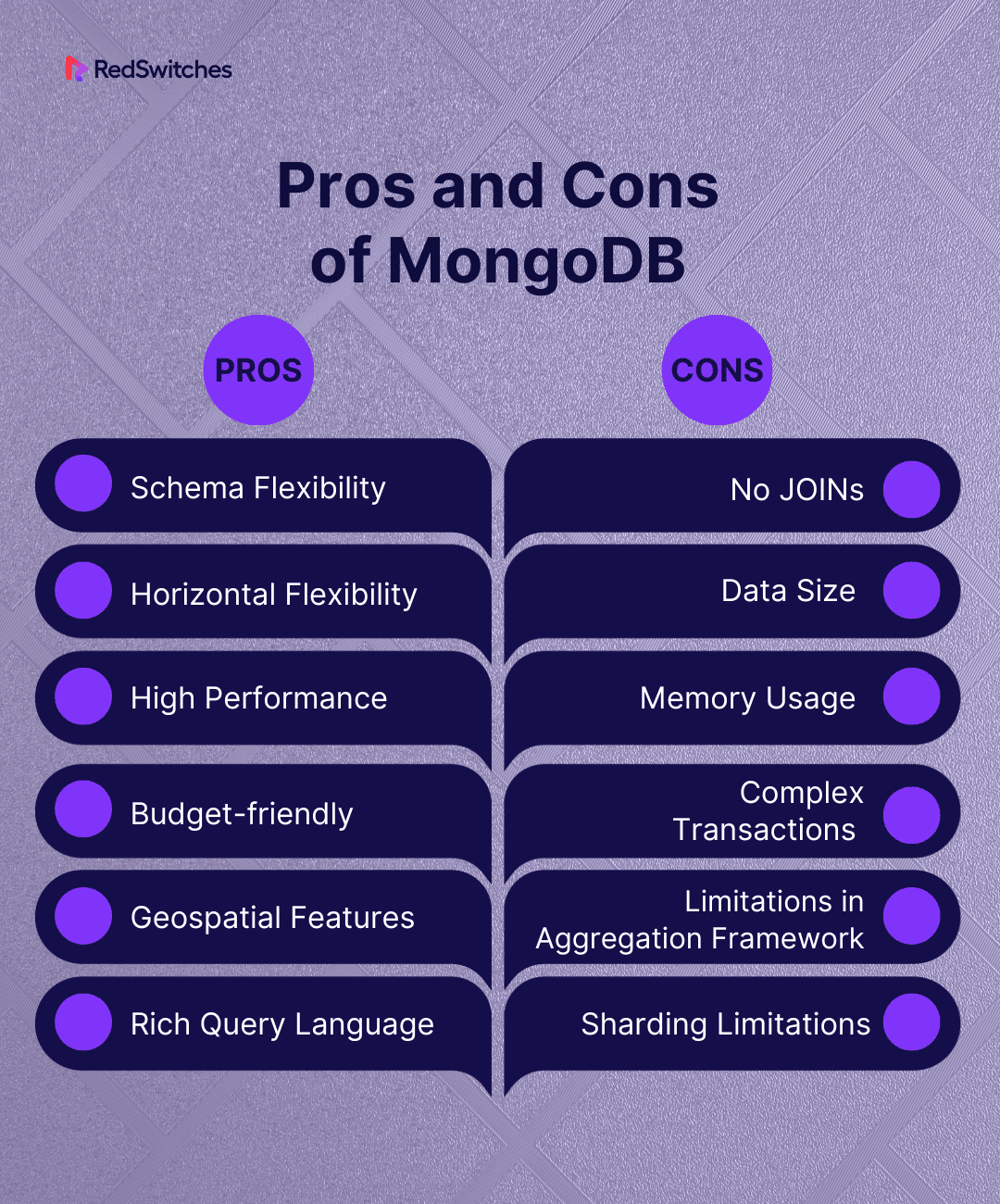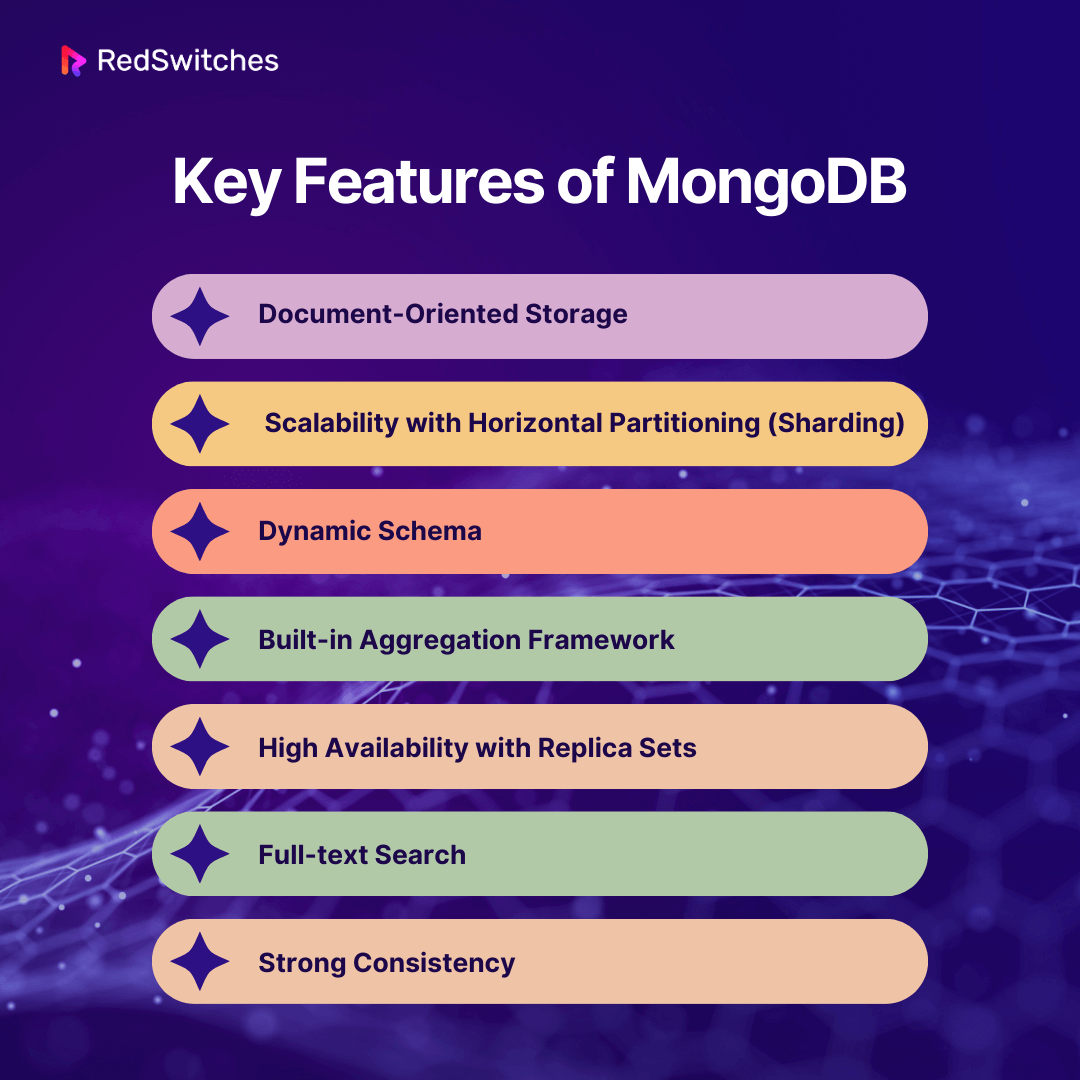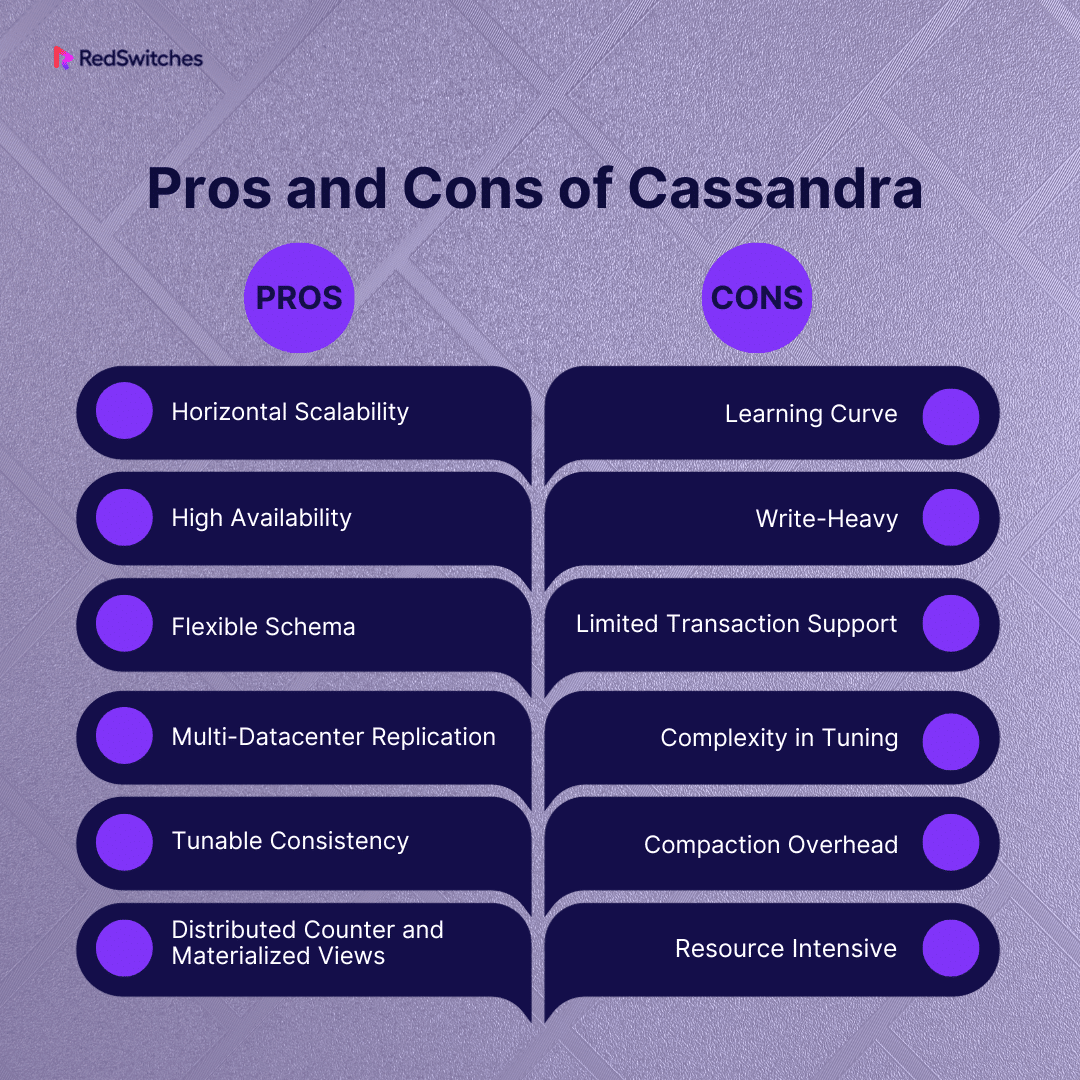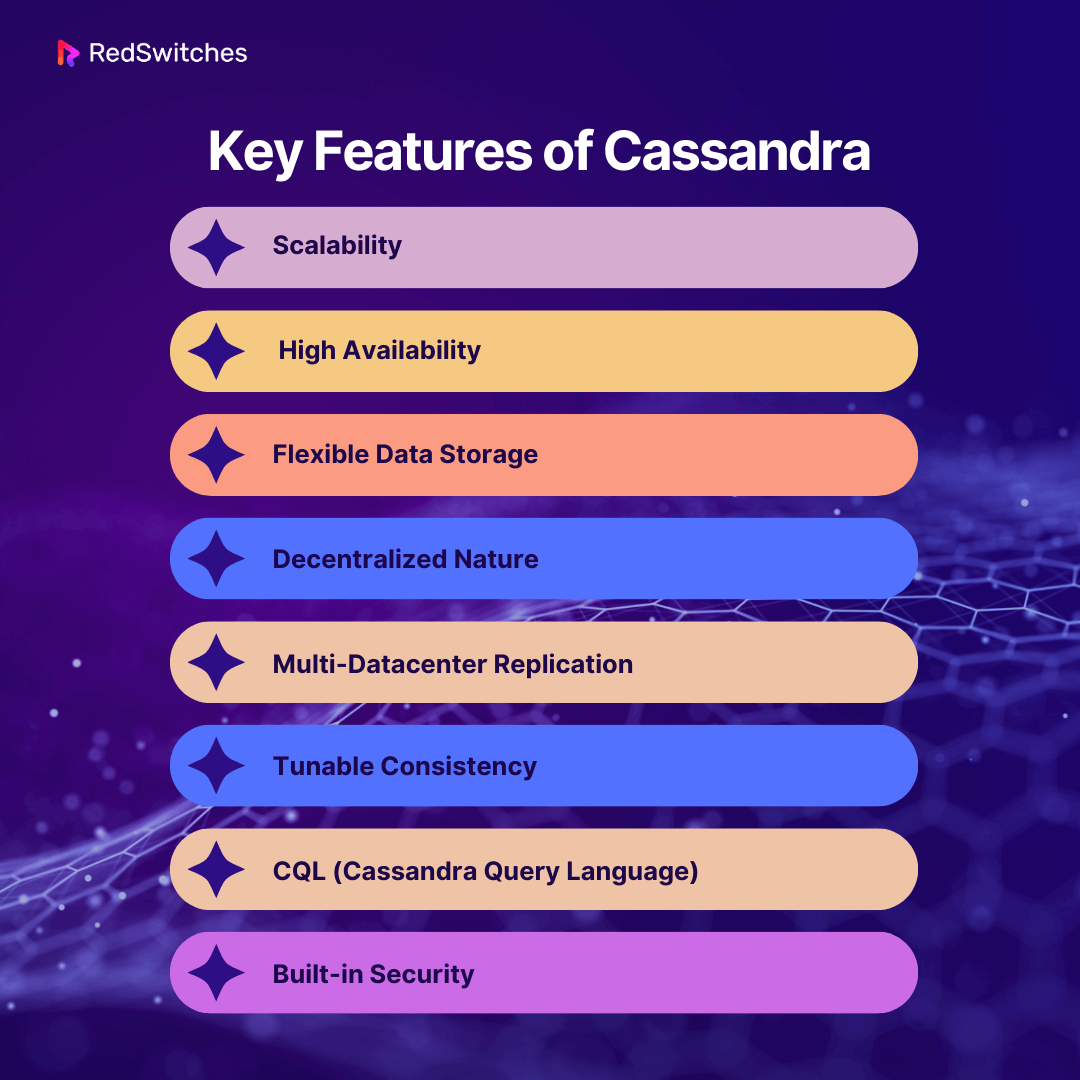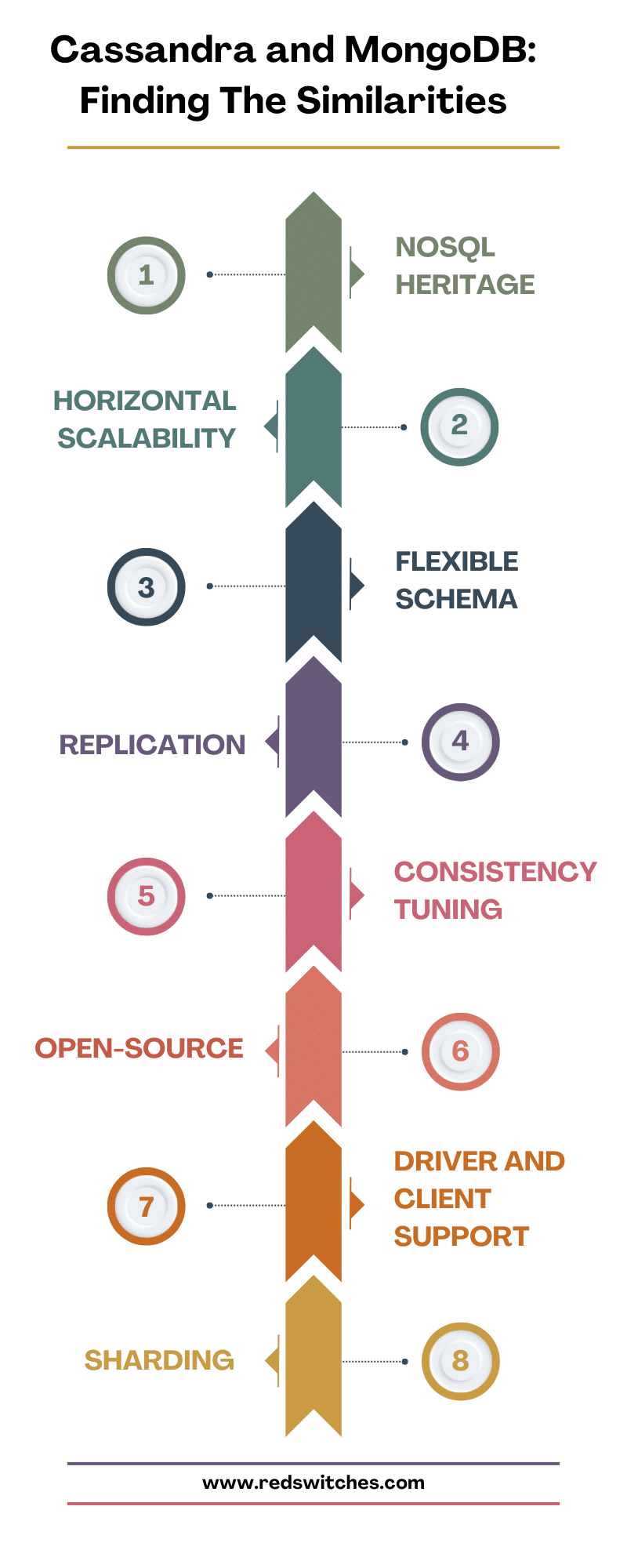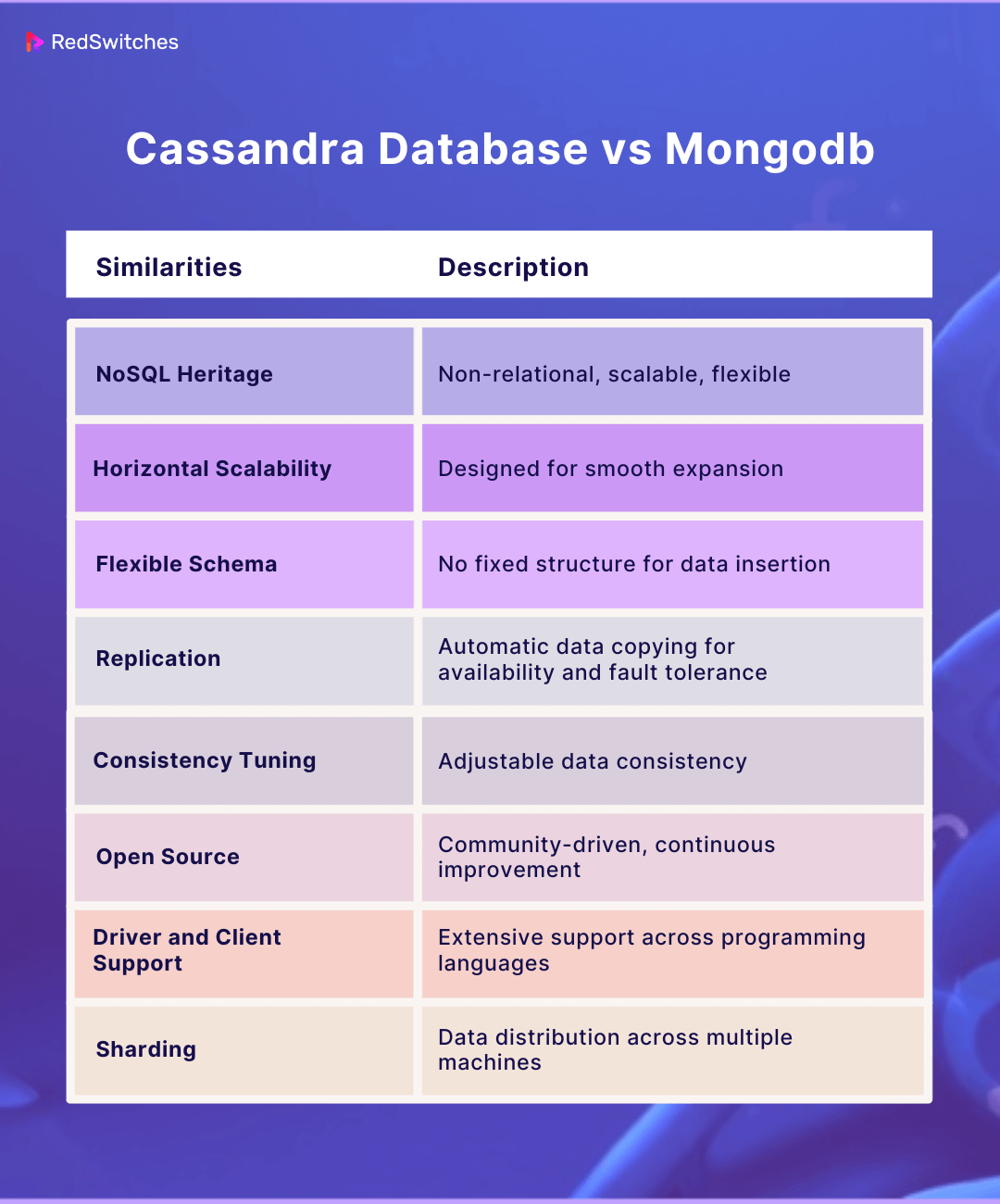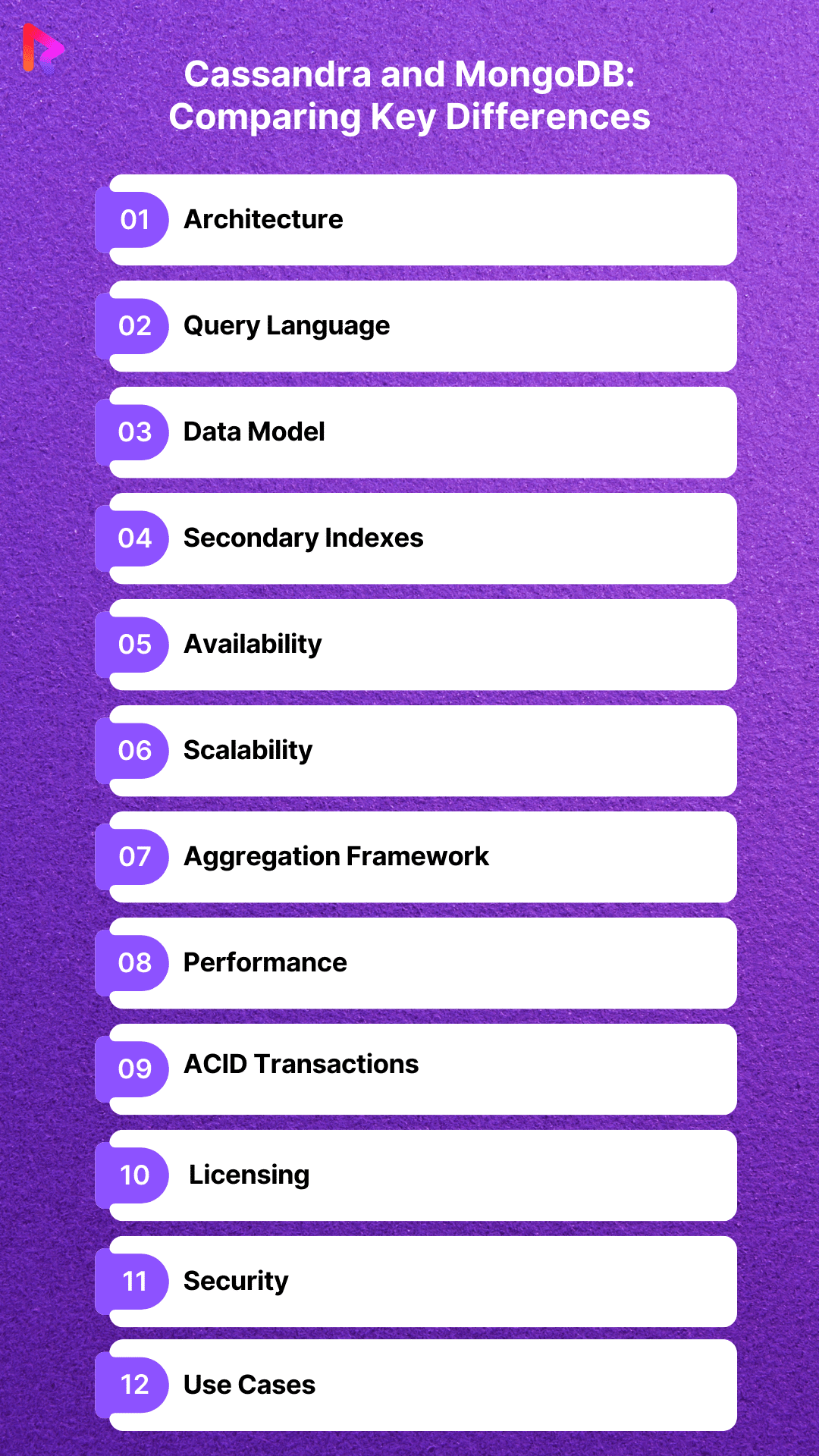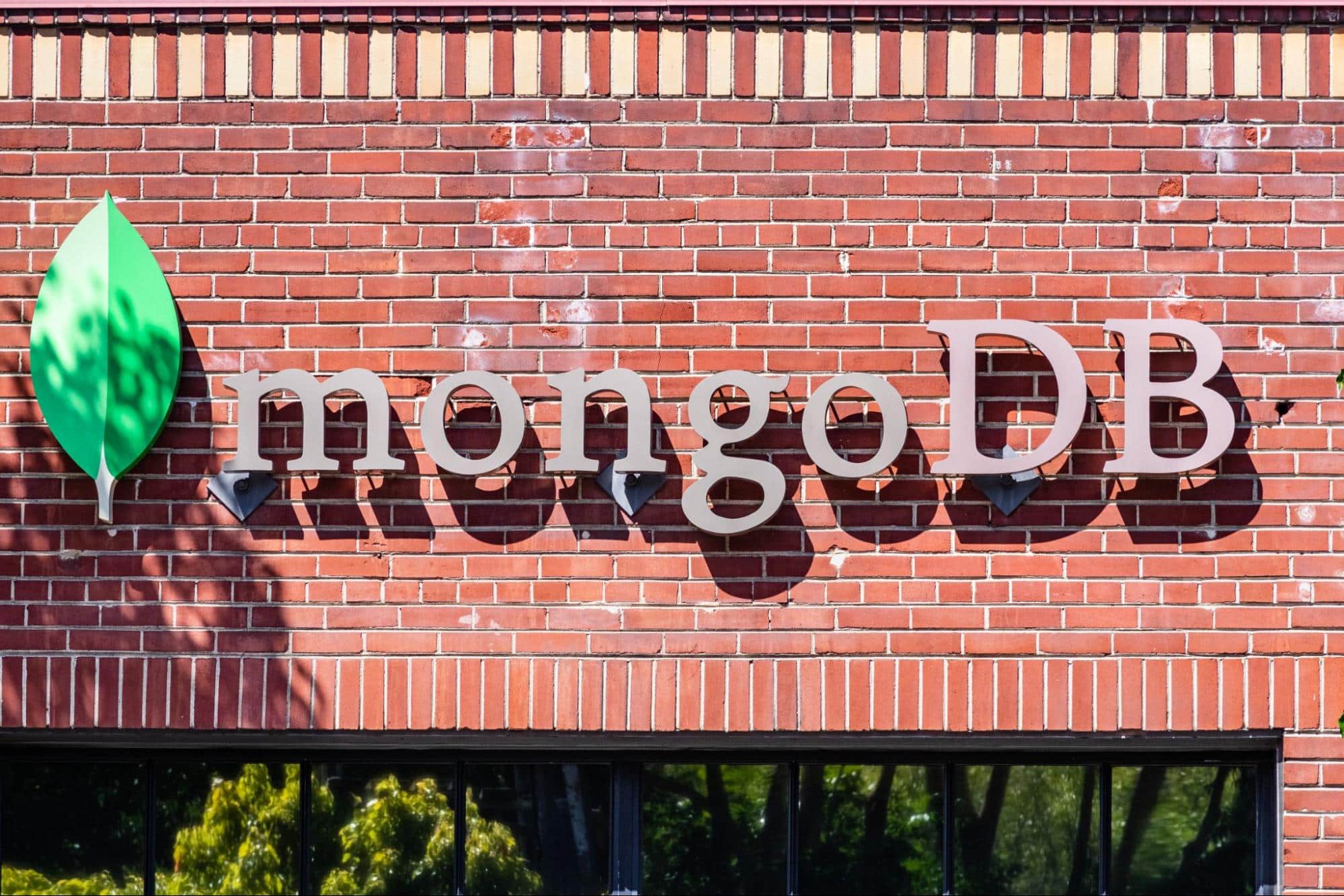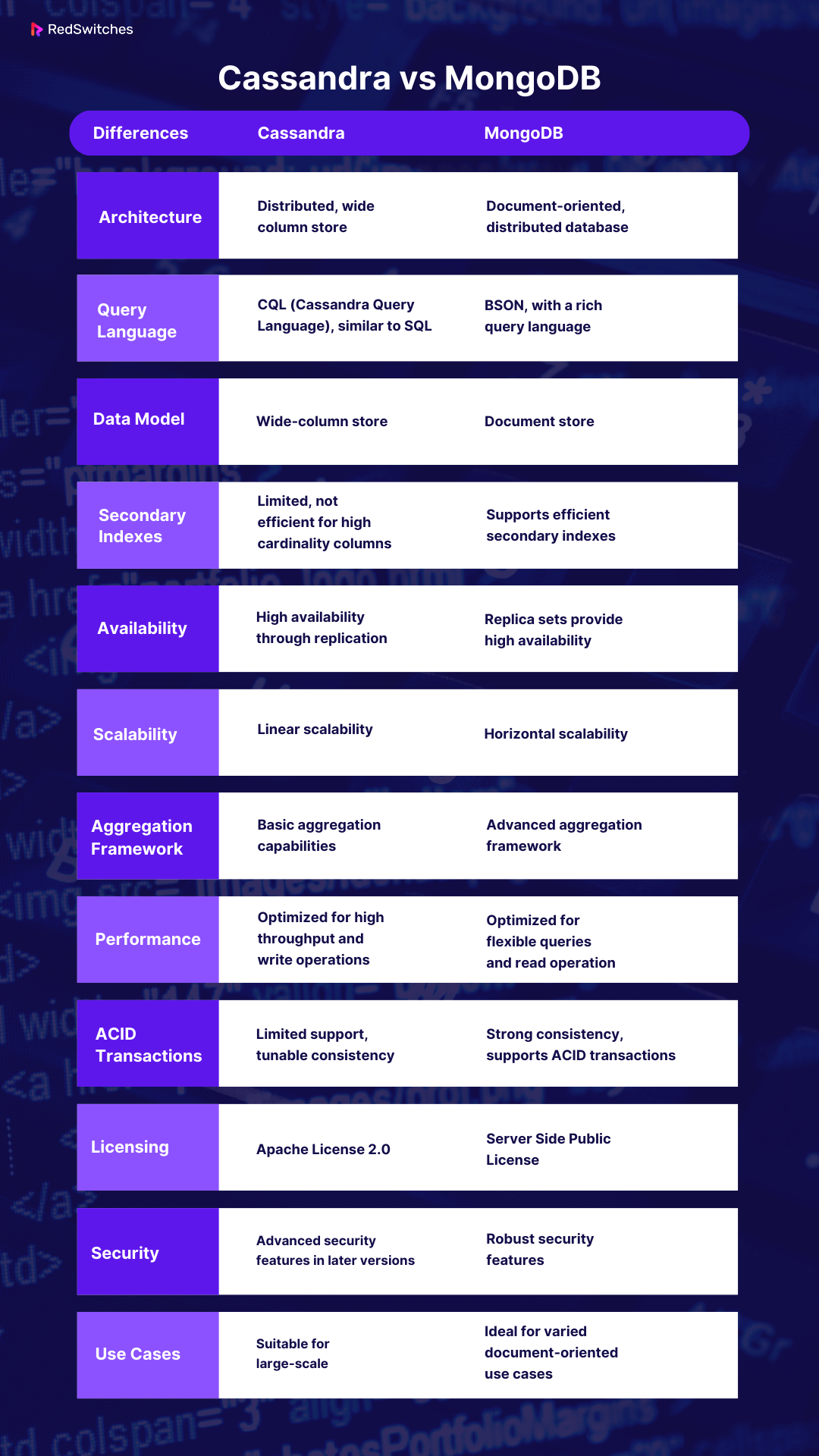The database systems supporting this data hold ample significance in an era where data drives decisions and innovations. As we enter 2024, businesses often face the issue of choosing the right database system. Among the leaders in the NoSQL realm are Cassandra and MongoDB – each featuring unique capabilities, strengths, and potential drawbacks.
According to a 2023 survey on the world’s most sought-after database skills for developers, MongoDB ranked fifth, with a 439.42 ranking score. Cassandra ranked twelfth, with a 110.06 ranking score.
Credits: Shutterstock
While both database systems are dependable, it may be challenging to determine which, between Cassandra vs MongoDB, is most suitable for your needs and requirements. This blog outlines the difference between Cassandra and MongoDB to help you decide which fits your needs best.
Table of Contents
- What is MongoDB?
- What is Cassandra?
- Cassandra and MongoDB: Database Management System Similarities
- Comparing Key Differences Between Cassandra vs MongoDB
- Cassandra vs MongoDB: Architecture
- Cassandra vs MongoDB: Query Language
- Cassandra vs MongoDB: Data Model
- Cassandra vs MongoDB: Secondary Indexes
- Cassandra vs MongoDB: Availability
- Cassandra vs MongoDB: Scalability
- Cassandra vs MongoDB: Aggregation Framework
- Cassandra vs MongoDB: Performance
- Cassandra vs MongoDB: ACID Transactions
- Cassandra vs MongoDB: Licensing
- Cassandra vs MongoDB: Security
- Cassandra vs MongoDB: Use Cases
- Conclusion – Cassandra vs MongoDB
- FAQs
What is MongoDB?
Credits: Shutterstock
Before we discuss Cassandra database vs MongoDB it is important to understand the definitions.
MongoDB is an open-source, document-oriented NoSQL database system designed for scalability and flexibility. Unlike traditional relational databases that organize data into tables with rows and columns, MongoDB uses a more flexible structure in JSON-like documents with dynamic schemas, referred to as BSON.
This means that each document can have its own unique set of fields, and the data structure can change over time. MongoDB is well-suited for handling significant volumes of rapidly evolving, complex data. It is commonly used in big data applications, mobile applications, content management systems, and other software projects demanding a scalable, high-performance database.
Also Read: Navigating the Linux Database Landscape: A Deep Dive into PostgreSQL, MySQL, and Beyond.
Pros and Cons of MongoDB
Below is a list of the pros and cons of MongoDB:
Pros
- Schema Flexibility: MongoDB’s document-oriented structure allows for a flexible schema. Every document in a collection can have different fields. This makes it easier to adapt to changing requirements or data structures.
- Horizontal Scalability: MongoDB is designed for easy horizontal scalability, using sharding to distribute data across multiple servers. As the dataset grows, you can add more servers to continue scaling.
- High Performance: Its indexing capabilities, in-memory processing, and design enable fast writes and reads. Thus, it is well-suited for applications with high write loads or real-time processing needs.
- Integrated Caching: MongoDB uses an internal memory cache to store frequently accessed data. This ensures quicker retrieval without constantly querying the database.
- Geospatial Features: MongoDB offers built-in support for geospatial data and related query operations, making it ideal for location-based data services and applications.
- Rich Query Language: Despite being a NoSQL database, MongoDB offers a rich set of query operations and functions. This allows for powerful data manipulation and retrieval, including filtering, sorting, and aggregation.
Cons
- No JOINs: Unlike relational databases, MongoDB doesn’t support JOIN operations. This means related data often needs to be stored within the same document, which can lead to data redundancy and challenges in data normalization.
- Data Size: Since MongoDB is a document-based database, it can consume more space when compared to relational databases. This is because field names are stored along with the data in every document, leading to more significant storage overhead.
- Memory Usage: MongoDB’s storage engine, WiredTiger, requires sufficient memory for optimal performance. Page faults can significantly impact performance if the working set size exceeds the RAM.
- Complex Transactions: While MongoDB supports multi-document ACID transactions starting from version 4.0, they can be more complicated and less efficient than the transactions in traditional relational databases.
- Limitations in Aggregation Framework: MongoDB offers an aggregation framework to process data transformation and compute operations. It can be complex and less intuitive for those accustomed to SQL-like query languages.
- Sharding Limitations: While sharding allows MongoDB to scale horizontally by distributing data across multiple servers, the process can be complex. Choosing an improper shard key or making mistakes during the sharding setup can lead to imbalanced data distribution and complicate the scaling process.
Key Features of MongoDB
Below are some standout features that make MongoDB a top choice for many developers and businesses.
Document-Oriented Storage
MongoDB uses a document-oriented storage model, allowing data to be stored in a flexible, JSON-like format. Each record in MongoDB is a document with different fields of different types and even nested documents. This approach provides more flexibility in data representation and can align more closely with object-oriented programming concepts.
Scalability with Horizontal Partitioning (Sharding)
MongoDB supports horizontal scaling through sharding. This allows data to be distributed across multiple servers. Sharding also enables databases to handle vast amounts of data and high throughputs by splitting extensive data sets into smaller chunks and distributing them. As the data grows, new shards can be easily added to the system, ensuring smooth scalability.
Dynamic Schema
MongoDB features a dynamic schema, unlike traditional relational databases requiring a set schema. Documents within a single collection can have different fields and structures. This flexibility makes it easier to evolve your data model without incurring the overhead of migrations typically needed in structured databases.
Built-in Aggregation Framework
MongoDB has a powerful aggregation framework. It enables complex data transformations and computations. This framework allows users to filter and transform the data, group it, and then reshape the results, providing a toolset for tasks like data analytics and batch processing. It’s an essential feature for applications that demand real-time analytics and reporting.
High Availability with Replica Sets
Ensuring data availability is crucial for any database. MongoDB achieves this with replica sets, offering automatic failover and data redundancy. A replica set is a group of MongoDB servers that maintain the same dataset, with one primary node handling writes and secondary nodes replicating the data for read scaling and failover.
Full-text Search
MongoDB supports full-text search, allowing developers to perform complex text searches on their data. This feature benefits applications with search capabilities, like content management systems or e-commerce platforms. With built-in text search, MongoDB eliminates the need for integrating external search engines.
Strong Consistency
MongoDB offers strong consistency, ensuring that after a write operation, reads will return the value of that operation. This ensures data reliability and integrity, especially in systems where data correctness is critical. It’s a balancing act between performance and data accuracy, and MongoDB provides the tools to adjust this as needed.
What is Cassandra?
Credits: Shutterstock
Cassandra is an open-source, distributed NoSQL database system designed for scalability and high availability without compromising performance. Originally developed at Facebook to handle large amounts of data across multiple commodity servers with no single point of failure, Cassandra has become a popular choice for applications requiring seamless scalability and fault tolerance.
Unlike traditional relational databases that rely on structured tables with predefined schemas, Cassandra organizes data in tables, offering a more flexible schema design. It uses a partitioned row store with rows organized by the partition key, making it capable of handling large-scale, write-heavy workloads. Major companies and platforms use Cassandra for its robustness and ability to handle massive amounts of data across multiple data centers and the cloud.
Pros and Cons of Cassandra
Like any technology, Cassandra has its own set of advantages and disadvantages. Here’s a breakdown of the pros and cons of Cassandra:
Pros
- Horizontal Scalability: One of Cassandra’s major strengths is its ability to scale horizontally. You can add more machines to the system without downtime, ensuring that the system can handle large amounts of data smoothly.
- High Availability: Cassandra is designed with a distributed architecture. Data is replicated across multiple nodes, ensuring high availability and fault tolerance. Even if some nodes fail, the system remains operational.
- Flexible Schema: Cassandra is a NoSQL database and allows for a flexible schema design. You can easily add columns to existing tables without affecting already written rows.
- Multi-Datacenter Replication: Cassandra supports replication across multiple data centers. This ensures data availability even in a complete data center failure.
- Tunable Consistency: Cassandra allows users to choose the level of consistency they need for a particular read/write operation. This helps balance consistency and latency.
- Distributed Counter and Materialized Views: These features can benefit specific use cases, including counting operations and caching.
Cons
- Learning Curve: For those familiar with relational databases, there’s a learning curve when transitioning to Cassandra’s NoSQL model.
- Write-Heavy: While Cassandra is optimized for writes, it may not perform as efficiently for heavy read operations as other databases.
- Limited Transaction Support: Unlike traditional RDBMS, Cassandra doesn’t fully support ACID (Atomicity, Consistency, Isolation, Durability) properties. While it offers atomic batch operations, it doesn’t provide the same transactional consistency in traditional relational databases.
- Complexity in Tuning: Due to its many configuration options and the nature of distributed systems, Cassandra can be complex to tune for optimal performance.
- Compaction Overhead: Cassandra periodically merges and compacts SSTables on disk, which can be I/O intensive and affect the overall performance.
- Resource Intensive: Cassandra can be resource-intensive in terms of disk space and memory, especially in large deployments.
Are you looking to learn more about non-relational databases? Read our informative blog, ‘Exploring Non Relational Databases: 7 Things To Consider.’
Key Features of Cassandra
Below are a few features that make Cassandra among the top choices in the world of databases:
Scalability
Cassandra is designed with horizontal scalability at its core. It can handle increased loads by distributing data across many servers. As more processing power or storage is needed, you can add more nodes to the system without downtime, ensuring consistent performance.
High Availability
One of the most standout benefits of Cassandra is its high availability. Data is automatically replicated to multiple nodes to ensure recovery from potential node failures. This decentralized approach, where every node is identical, guarantees no single point of failure, making data loss highly unlikely.
Flexible Data Storage
Cassandra is versatile regarding data storage. It can accommodate structured, semi-structured, and unstructured data, offering flexibility for diverse data requirements. This makes it a preferred choice for applications that need to store diverse data types without being confined to a rigid schema.
Decentralized Nature
Every node in a Cassandra cluster has the same role, eliminating bottlenecks and potential points of failure. There’s no concept of a master node ensuring a democratic, efficient data management system. This architecture not only promotes robust fault tolerance but also facilitates smoother operations.
Multi-Datacenter Replication
Cassandra’s ability to replicate data across multiple data centers is a significant advantage for global applications. This feature ensures that users get served from the nearest data center, reducing latency. It also acts as a contingency for disaster recovery, ensuring business continuity even if an entire data center goes down.
Tunable Consistency
Consistency in a distributed database system like Cassandra is critical. While Cassandra prioritizes availability and partition tolerance, it also enables users to choose the level of consistency they need for every write and read operation. This tunable consistency ensures that you can tailor your database operations according to the specific needs of your application.
CQL (Cassandra Query Language)
CQL bridges the gap between SQL and the NoSQL realm. It allows developers to interact with Cassandra, like SQL databases. The intuitive interface and familiar syntax make it easier for developers to create and manage their data structures.
Built-in Security
Cassandra takes security seriously. It offers robust built-in features, including authentication, authorization, and encryption (both for data in transit and at rest). This layered approach ensures that sensitive data remains protected and accessible only to authorized users.
Also Read: What Is A Relational Database: A Beginner’s Guide.
Cassandra and MongoDB: Database Management System Similarities
Below is a list of similarities between MongoDB versus Cassandra:
NoSQL Heritage
Cassandra and MongoDB belong to the NoSQL family. This means they deviate from the traditional relational database systems (RDBMS) in storing and managing data. Neither system uses SQL as its query language, and both prioritize scalability and flexibility over the strict consistency of RDBMS.
Horizontal Scalability
Both Cassandra and MongoDB are scalable. They are designed to expand smoothly by adding more servers to the system, ensuring the database can handle increasing data volumes without compromising performance.
Flexible Schema
Both databases offer flexible schemas. When inserting data, you don’t need a fixed structure. You can add or remove fields without affecting other rows or documents, making it easier to evolve your application over time.
Replication
Data replication is intrinsic to both. They automatically create copies of data, ensuring high availability and fault tolerance. Data is replicated across clusters in Cassandra, while MongoDB supports replica sets to maintain multiple copies of the data.
Consistency Tuning
While strict consistency is a hallmark of traditional RDBMS, Cassandra and MongoDB allow for tunable consistency. This means you can adjust how consistent your data needs to be, depending on your application’s requirements.
Open Source
Cassandra and MongoDB are open-source platforms foster an extensive community of contributors and users. This ensures continuous improvement, extensive documentation, and countless resources for developers.
Driver and Client Support
Given their popularity, both databases offer extensive driver support for various programming languages. This ensures that developers can easily integrate these databases into their applications, irrespective of their programming language.
Sharding
To distribute data across multiple machines, both MongoDB and Cassandra use sharding. While the implementations differ, the core concept is similar: dividing and distributing the dataset across nodes or clusters to ensure efficient data management and retrieval.
Now that we have discussed the definitions, pros and cons, features, and similarities of Cassandra vs MongoDB, let’s explore the differences between Cassandra database vs Mongodb.
Also Read: A Comprehensive Overview of Big Data Databases.
Comparing Key Differences Between Cassandra vs MongoDB
Comparing the differences between Cassandra vs MongoDB can offer valuable insight into which NoSQL database is best for you.
Cassandra vs MongoDB: Architecture
Cassandra
Cassandra follows a peer-to-peer distributed system. All nodes are treated equally, and there’s no single point of failure. Data is distributed across all nodes, each responsible for a specific set. This architecture fosters high availability and fault tolerance.
MongoDB
MongoDB uses a master-slave architecture. One node (the primary node) handles writes while the other nodes (secondary nodes) handle reads. If the primary fails, a secondary is elected the new primary. Although MongoDB has enhanced its horizontal scalability with sharded clusters, this architecture inherently has a single point of failure until the secondary takes over.
Cassandra vs MongoDB: Query Language
Cassandra
Cassandra uses CQL (Cassandra Query Language), which resembles SQL in syntax. This makes it slightly easier for developers familiar with SQL to transition to. CQL is explicitly designed for querying Cassandra. It offers a range of functionalities, including creating tables, inserting data, and querying data.
MongoDB
MongoDB doesn’t use SQL. Instead, it operates with its own rich JSON-like documents and query language. MongoDB data retrieval involves using specific operators like $lt, $gt, etc. There might be a steeper learning curve for individuals from a SQL background, but the flexibility in querying can be worth it.
Cassandra vs MongoDB: Data Model
Cassandra
Cassandra’s data model is based on columns. The database uses tables much like relational databases but is more flexible. Each row doesn’t need the same columns, allowing for a more dynamic data model. It’s mainly suited for time-series data or any use case that demands high write throughput.
MongoDB
MongoDB is a document-based database. Data is stored in collections of JSON-like documents. Each document can have a varying structure, offering a high degree of flexibility. This model is beneficial for hierarchical data storage, content management systems, or any application that demands a flexible schema.
Cassandra vs MongoDB: Secondary Indexes
Cassandra
Cassandra supports secondary indexes, but they are used differently than primary indexes. Secondary indexes in Cassandra are best for columns with low cardinality and aren’t recommended for high-cardinality data. They allow for enhanced query flexibility but can affect performance, especially if not used judiciously.
MongoDB
MongoDB also supports secondary indexes, enhancing search performance on fields other than the primary key. Unlike Cassandra, MongoDB can efficiently handle secondary indexes even on high-cardinality fields. This allows for diverse query patterns without major performance drawbacks.
Cassandra vs MongoDB: Availability
Cassandra
Cassandra is designed for high availability and fault tolerance. It uses a peer-to-peer architecture where all nodes are treated equally. This decentralized approach ensures that there’s no single point of failure. Even if several nodes fail, the system remains available.
MongoDB
MongoDB ensures availability through replica sets. A replica set holds multiple copies of data, and MongoDB automatically fails over to a secondary replica in the event of a primary replica failure. This automatic failover feature ensures data availability even if a node or primary replica malfunctions.
Credits: FreePik
Cassandra vs MongoDB: Scalability
Cassandra
Cassandra was built for linear scalability. You can expand the cluster by simply adding new nodes without any downtime. Data gets automatically distributed across all nodes, and Cassandra’s decentralized nature ensures no bottleneck as the system scales.
MongoDB
MongoDB offers horizontal scalability through sharding. As the data grows, MongoDB distributes it across multiple servers, ensuring that the system can handle the significant load. The automated sharding feature enables MongoDB to handle large datasets and high-throughput applications efficiently.
Cassandra vs MongoDB: Aggregation Framework
Cassandra
Cassandra uses CQL (Cassandra Query Language), which resembles SQL’s syntax. Cassandra provides basic functions for aggregation operations like COUNT, MIN, MAX, SUM, and AVG. Its aggregation capabilities are limited compared to other databases, and it often relies on client-side processing for complex aggregation tasks.
MongoDB
MongoDB features a rich aggregation framework. This allows developers to create complex data transformations and computations. With its pipeline mechanism, data can be transformed in multiple stages, filtered, and output in a consolidated format. This makes MongoDB particularly suited for analytics and detailed data processing tasks.
Cassandra vs MongoDB Performance
Cassandra
Cassandra is designed for distributed, fault-tolerant storage with no single point of failure. It can deliver high read performance with its partitioned data architecture and distributed nature, especially in scenarios where reads are distributed across the cluster. Its tunable consistency model allows you to balance between read performance and data accuracy.
MongoDB
Credits: Shutterstock
MongoDB also provides robust read performance, and its horizontal scalability ensures that it can handle large amounts of read traffic. The exact read performance can depend on factors like indexing, the use of sharding, and the forms of queries being executed. Proper optimization can make MongoDB incredibly efficient in delivering high-speed reads.
Cassandra vs MongoDB: ACID Transactions
Cassandra
Traditionally, Cassandra prioritized availability and partition tolerance over consistency, as per the CAP theorem (Consistency, Availability, and Partition Tolerance are three properties in any distributed data store – but it’s only possible to achieve two simultaneously). While it does support lightweight transactions that give a level of atomicity, it doesn’t offer complete ACID (Atomicity, Consistency, Isolation, Durability) compliance across the cluster. In some scenarios, there could be a slight delay before data becomes consistent across all nodes.
MongoDB
Starting from version 4.0, MongoDB introduced multi-document ACID transactions. Operations affecting multiple documents can be executed atomic, ensuring data consistency and integrity. This brought MongoDB closer to the transactional consistency offered by traditional relational databases.
Cassandra vs MongoDB: Licensing
Cassandra
Cassandra is an open-source project released under the Apache License 2.0. It’s free to use, modify, and distribute. Companies can use Cassandra without worrying about licensing costs, making it a suitable choice for startups and large enterprises. The Apache License allows for modifications and internal use without the obligation to release derived works as open source.
MongoDB
MongoDB is also an open-source project, but its licensing model has evolved. Originally, MongoDB was under the AGPL (GNU Affero General Public License), but in 2018, MongoDB introduced the Server Side Public License (SSPL).
The SSPL is similar to open source but has conditions related to offering MongoDB as a service. While MongoDB community edition remains free, businesses that want to use MongoDB in a SaaS application might face licensing complexities.
Cassandra vs MongoDB: Security
Credits: FreePik
Cassandra
Cassandra offers a robust security model with features like internal authentication, role-based access control, and object permission management. By default, Cassandra is not configured for maximum security. Administrators need to take the initiative to tighten access controls, integrate them with third-party authentication providers, and enable encryption for data-at-rest and data-in-transit.
MongoDB
MongoDB heavily emphasizes security with features including SCRAM-SHA-1 and SCRAM-SHA-256 authentication, role-based access control, and auditing capabilities. MongoDB binds to localhost by default, ensuring that the database is not exposed to the network unless configured by an administrator. MongoDB also offers field-level encryption, allowing specific sensitive fields within documents to be encrypted, enhancing data privacy.
Cassandra vs MongoDB: Use Cases
Cassandra
Born out of the need for scalability and high availability, Cassandra is a commendable choice for applications that require massive scalability and geographically distributed databases. It is often used in scenarios like real-time analytics, monitoring systems, and applications requiring constant uptime and the ability to handle large amounts of data spread across multiple data centers or cloud availability zones.
MongoDB
MongoDB, with its document-oriented model, is especially well-suited for use cases requiring schema design flexibility, rapid iterative development cycles, or handling hierarchical data. Typical scenarios where MongoDB shines include catalogs, content management systems, mobile applications, and any application where the data structure might evolve.
Still confused about which NoSQL database to choose? Read our informative guide: ‘A Comprehensive Guide to NoSQL Databases: Features, Advantages, and Types,’ to make an informed decision.
Conclusion – Cassandra vs MongoDB
The debate between Cassandra and MongoDB has proven that there is no one-size-fits-all when it comes to NoSQL databases. Both databases offer unique features tailored to different use cases and application needs.
While Cassandra stands out in scenarios demanding high write throughput and scalability across several nodes, MongoDB shines for its flexible schema and intuitive JSON-like document model. As we begin 2024, the decision between Cassandra vs MongoDB depends upon your exact project requirements, scalability demands, and preferred data model.
No matter your choice, ensure optimal performance and reliability with RedSwitches, a trusted partner for hosting your NoSQL databases. With our tailored solutions and dedicated customer support, navigating the intricacies of database management has never been easier. So what are you waiting for? Learn more about us today!
FAQs
Q. What is the difference between MongoDB and Cassandra medium?
The key difference between MongoDB and Cassandra medium lies in the data model and architecture. MongoDB is a document-based NoSQL database that stores data in JSON-like format. Cassandra is a column-family store and is designed for distributed and horizontal scalability. The decision between Cassandra vs MongoDB should depend upon your scalability needs and chosen data structure.
Q. Is Cassandra a NoSQL?
Yes, Cassandra is a NoSQL database. When contrasting Cassandra vs MongoDB, both belong to the NoSQL family, which means they don’t use the traditional relational database model. Instead, Cassandra operates as a column-family store. This is especially advantageous for scenarios where scalability and high availability are critical.
Q. Is MongoDB faster than Cassandra?
The speed between MongoDB and Cassandra can vary based on the specific use case. In the Cassandra vs MongoDB debate, MongoDB often excels in scenarios that require quick and agile development with a flexible schema. Cassandra shines in environments demanding high write operations and scalability across multiple nodes. Factors like hardware, configuration, and the nature of the workload can influence actual performance.
Q. What are the use cases for Apache Cassandra?
Apache Cassandra finds application in scenarios where high availability and scalability are crucial. It is widely used for time-series data, messaging systems, fraud detection, recommendation engines, and IoT applications.
Q. How does Cassandra compare to MongoDB?
While both are popular NoSQL databases, Cassandra is known for its distributed architecture and linear scalability, making it suitable for write-heavy applications. On the other hand, MongoDB shines in read-heavy workloads and offers a flexible schema with rich querying capabilities.
Q. What is the battle between Cassandra and MongoDB all about?
The battle between Cassandra and MongoDB revolves around their different design philosophies, data models, and performance characteristics. It’s often a matter of choosing the right tool for the specific requirements of a project.
Q. Can you explain the role of Apache Software Foundation in relation to Cassandra?
The Apache Software Foundation hosts and supports the development of various open-source projects, including Apache Cassandra. It provides a collaborative environment for community-driven software development and stewardship of key technologies.
Q. What are some key differences between Cassandra and MongoDB?
One significant difference is that Cassandra is a wide-column store, optimized for write-heavy workloads and distributed setups, while MongoDB is a document-oriented database with a focus on rich querying and flexible schemas. They also have different data distribution and replication strategies.
Q. Is Apache Cassandra suitable for handling large-scale data in distributed environments?
Yes, Apache Cassandra is designed for handling massive amounts of data across multiple nodes in a distributed environment. Its decentralized architecture and support for linear scalability make it well-suited for handling large-scale data.
Q. Can you compare the support for database transactions in Cassandra and MongoDB?
Cassandra supports atomicity, consistency, isolation, and durability (ACID) transactions at the row level, while MongoDB supports multi-document ACID transactions in its latest versions. Both databases offer different transactional models based on their respective data models and architectures.
Q. What are the considerations when choosing between Cassandra and MongoDB as a NoSQL database?
When choosing between Cassandra and MongoDB, factors such as the nature of the data and workload, the need for scalability, the level of support for complex querying, and the familiarity of the development team with each technology play crucial roles. It’s important to evaluate these factors in the context of specific use cases.
Q. How does Apache Cassandra compare to relational database management systems like Hadoop?
Apache Cassandra, as a NoSQL database, is designed for horizontally scaled, distributed architectures and is optimized for high write throughput. In contrast, Hadoop is a distributed processing framework used for big data analytics and batch processing, often working in conjunction with a data storage solution like Cassandra.
Q. Is MongoDB Cloud (Atlas) a prominent offering in the MongoDB ecosystem?
MongoDB Cloud, commonly known as Atlas, is a fully managed database service provided by MongoDB. It offers features such as automated backups, monitoring, and security, making it a popular choice for deploying and managing MongoDB databases in the cloud.
